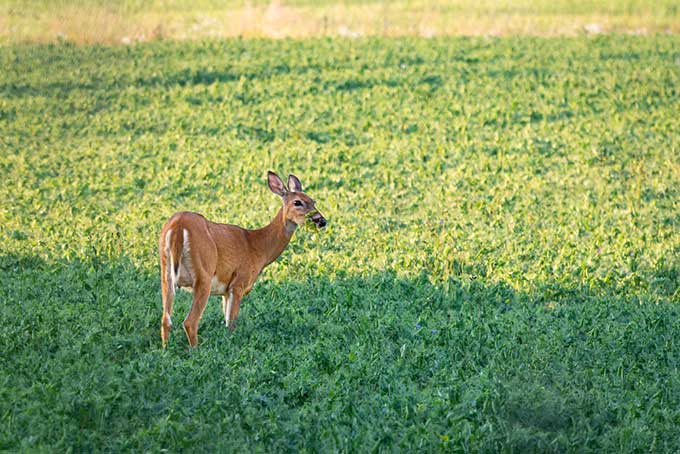
Building a food plot is a great way to ensure a consistent presence of deer on your property throughout the year. You’ll need to plant different crops for each season, which will support the health of the deer in their various stages. Read on to find out how to create a well-rounded food plot to keep deer well fed and on your property year-round.
Why You Should Plant a Food Plot
Food plots play a huge role in deer management. Deer are an important part of a healthy ecosystem, and having a food plot on your property can make a big difference in the health of the deer in your area. Food plots provide deer with the nutrition they need throughout the year and can help them thrive when other areas in their territory don’t have the food they need. Additionally, it will attract more deer to your property which will make it easier for you to watch and hunt them. By creating a desirable habitat on your property, the deer will prefer your property to other areas.
What to Plant in Spring
Spring is the perfect time to start your food plot. Your climate will determine how soon you can get planting. Once the soil is workable and not muddy, you’ll want to get seeds into the ground so they can begin to grow. You can get all the seeds you need to build a good food plot from a local feed store.
Some of the best spring crops are oats, clover, and turnips. Oats can be planted in early spring to provide deer extra energy for growth. Clover and turnips provide high levels of protein, vitamins, and minerals.
Forage crops such as chicory, soybeans, and alfalfa are also great for deer during spring. Chicory is an excellent source of protein and fiber that help deer gain mass and stay healthy. Soybeans provide protein and carbohydrates that will help with antler growth, and alfalfa gives them a steady supply of vitamin A and calcium.
In addition to these, trees and shrubs are attractive to deer for shade and hiding places. If you can provide fruit trees and berry bushes, you’ll attract even more deer to your property with these sweet fruits, as well as giving them shelter.
What to Plant in Summer
Keeping deer fed during the heat of summer can be tricky. The land often goes from lush and green to dry and dead. If your property continues to produce food while the rest of the land is not, the deer will happily congregate to enjoy the bounty, especially if it has a water source.
Summer is a great time to plant grasses and grains. Rye, wheat, and barley can keep deer coming back for months. They provide a great source of energy, but also grow back fairly quickly as the deer graze. You can help the deer gain mass at a time when food sources in other areas are dwindling quickly.
What to Plant in Fall
As summer retreats and the temperatures fall, many places see a regreening of the land before the deadly grip of winter sets in. This regreening period is a great time to reseed alfalfa and clover, while also planting legumes, like field peas, lentils, and soybeans to give deer their final energy push to help them maintain weight better through the cooler temperatures.
This is also the time to plant brassicas, like broccoli and cabbage that will grow well even through a light dusting of snow. These plants can provide much-needed nutrition through the lean period, which will draw even more deer to your property.
What to Plant in Winter
Winter food plots require a bit more care and planning but will be well worth it to have more deer available on your property.
Many of the brassicas planted in fall will continue to grow through winter until they are faced with hard freezes and heavy snow. Replanting brassicas while the weather is still good will allow them to regrow helping the deer have more food throughout winter. It is also a good time to reseed the clover, oats, chickory, and alfalfa to prepare them to grow as soon as the snow begins to melt in early spring.
Maintaining your food plot year-round can help ensure the deer on your property have enough sustenance to keep them healthy, happy, and coming back for more.
